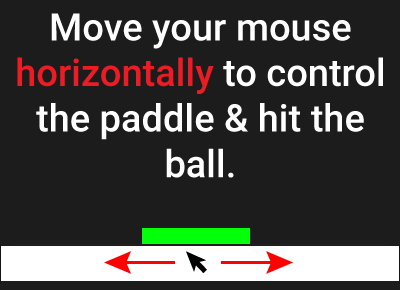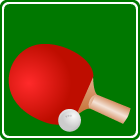


3 scores max per player; No foul language, show respect for other players, etc.
Name | Score | Date | ||
|---|---|---|---|---|
| 1 | ||||
| 2 | ||||
| 3 | ||||
| 4 | ||||
| 5 | ||||
| 6 | ||||
| 7 | ||||
| 8 | ||||
| 9 | ||||
| 10 |

Game: PONG
Aim: Break the bricks, score points
Method:
Use your mouse or tap in the white bar to move the paddle horizontally to bounce the ball up the screen. Answer questions when you break the white bricks, score big points with the yellow bricks.
Your final score is based on correct answers, bricks broken and time taken.

Eniola
"Who is taller?"
PONG game to practice
'Which fraction is bigger?' for 2nd grade
2nd grade / Fractions / Compare fractions / Which fraction is bigger?
2nd grade : Compare fractions - which fraction is bigger?
Knowing which fraction is bigger or smaller is not always obvious. If we compare fractions that have the same number on the bottom (the denominator) like ⅖, ⅗ and ⅘, then the bigger the number on the top (the numerator) the bigger the fraction is.
If we compare ⅘ to ⅖, we can see that these two fractions have the same denominator of 5. The numerators are 4 and 2. So we can say that ⅘ is the bigger of these two fractions. This makes sense because if I have ⅘ of a pie, that is more of the pie than if I have only got ⅖ of the pie.
There is another type of fraction that we need to talk about, unit fractions.
A unit fraction is the name for a fraction where the number on the top is a 1.
So ½ is a unit fraction and so are ⅐ and ⅛ but ⅖ is not because it's numerator is not 1, it is 2.
Comparing unit fractions to find the biggest is not as easy as our first example. If we think about the two most common unit fractions, ¼ and ½, we will see why. Which is bigger, ¼ of a cake or ½ a cake? The answer is that ½ a cake is a bigger share of the cake than ¼ of a cake even though the denominator of ½, which is 2, is smaller than the denominator of ¼, which is 4.
In the same way, if we compare ¼ with ⅛ to decide which is bigger, we will find that a ¼ share of that nice cake is a bigger share of the cake than a ⅛ share. So ¼ is a bigger fraction than ⅛.
So now we can compare some fractions with the same denominator, and we can compare some unit fractions, and we can decide which is the biggest and which is the smallest.
With our Pong math game you will be practicing the topic "Which fraction is bigger?" from 2nd grade / Fractions / Compare fractions. The math in this game consists of 16 questions that ask you to for each pair of fractions, choose which one would be the bigger share of a whole.

In our version of Pong/Breakout, there are 3 types of bricks for you to break: green bricks are worth just 2 points; yellow bricks are worth a whopping 50 points; breaking white bricks, which are worth 10 points, wins you a math question from the topic you have chosen.
You start with 5 lives. If the ball goes below the paddle, you lose a life and 200 points. The game ends when you answer all 10 questions or lose all your lives.
Notes
- This version of Pong is a one player game to learn or revise math
- Our PONG for math is a scoring game - play a few times and set a personal best score!
- Addictive! You may end up trying to avoid the white bricks so that you can play for longer...
UXO * Duck shoot * The frog flies * Pong * Cat and mouse * The beetle and the bee
Rock fall * Four in a row * Sow grow * Choose or lose * Mix and match

Latest leaderboard entries: Pong




How to play PONG to practice
'Which fraction is bigger?' for 2nd grade

- Select the PONG game from the games selection page.
- On the settings page there are brief instructions on how to play.
- Click on PLAY to enter the game screen.
- The clock starts when the bell rings.
- Move your mouse (or finger tap or drag in the white bar for touch screens) to move your paddle left and right.
- Knock the ball back up the screen to break the bricks.
- You start with 1000 points and 5 lives.
- You lose 1 point every 2 seconds.
- 200 points are deducted from your score for each life lost
- Green bricks score 2 point, yellow bricks score 50 points, white bricks score 10 points and open the question screen.
- For each question click/tap on the correct answer or enter it using the keyboard.
- Wrong answers lose you 25 points but correct answers win you 50 points.
- Continue breaking bricks and answering questions until you have cleared all the question bricks.
- The game also ends if you lose all 5 of your lives.










